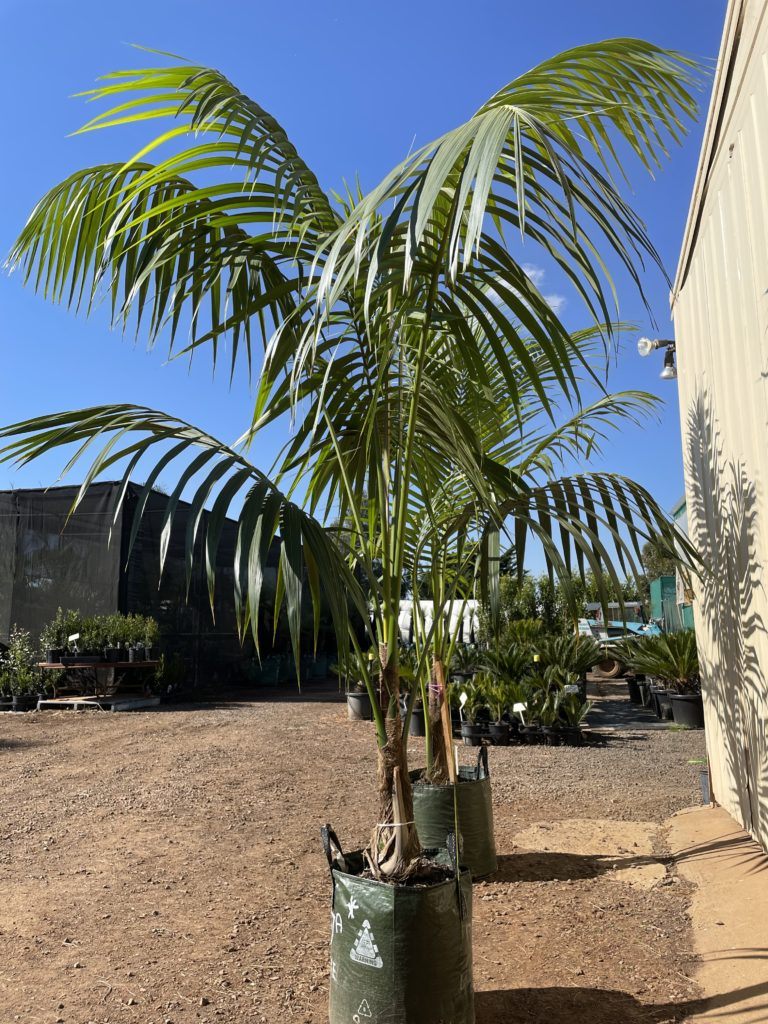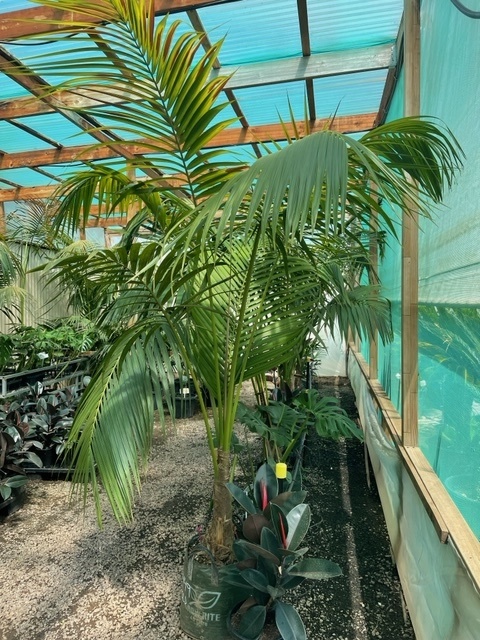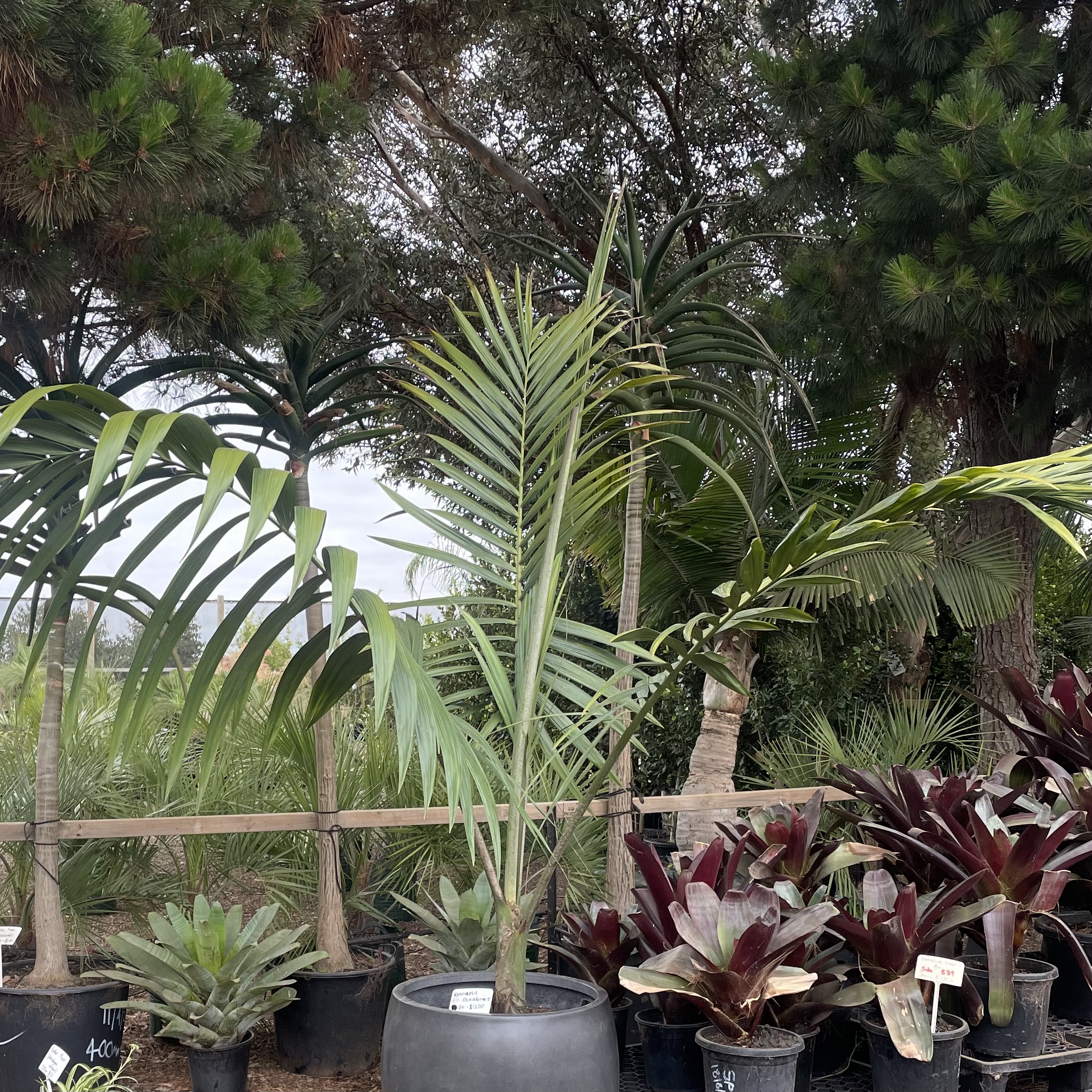
Welcome to the verdant world of True Green Nursery, where we nurture nature’s gifts with passion and expertise. Among our cherished botanical companions is the elegant Howea forsteriana, commonly known as the Kentia Palm. With its graceful fronds and timeless beauty, the Kentia Palm adds a touch of tropical splendor to any indoor or outdoor space. In this comprehensive guide, we’ll delve into the essentials of planting, positioning, and caring for your Kentia Palm to ensure its flourishing presence in your sanctuary.
Planting: Before diving into planting your Kentia Palm, it’s crucial to choose the right container and soil. Opt for a spacious container with ample drainage holes to prevent waterlogging, promoting healthy root growth. Select a well-draining potting mix rich in organic matter, such as peat moss or coconut coir, to provide optimal conditions for your palm.
- Container Selection: Choose a pot that’s at least 2-3 inches larger in diameter than the root ball of your Kentia Palm. Ensure the pot has drainage holes to prevent water stagnation, which can lead to root rot.
- Soil Preparation: Fill the bottom of the pot with a layer of gravel or broken pottery to improve drainage. Then, fill the pot with a high-quality, well-draining potting mix. You can mix in some perlite or sand to further enhance drainage.
- Planting Process: Carefully remove the Kentia Palm from its nursery container, being mindful not to disturb the roots excessively. Place the palm in the center of the new container, ensuring it sits at the same depth as it did in the nursery pot. Gently backfill with soil, pressing it down lightly to remove air pockets.
- Watering: After planting, give your Kentia Palm a thorough watering to settle the soil around the roots. Ensure the soil is evenly moist but not waterlogged. Water sparingly during the first few weeks to allow the palm to acclimate to its new environment.
Positioning: Kentia Palms thrive in bright, indirect light, making them ideal candidates for both indoor and outdoor settings. Proper positioning plays a pivotal role in the health and vitality of your palm.
- Indoor Placement: Choose a well-lit room with ample natural light, but avoid placing your Kentia Palm in direct sunlight, as this can scorch its delicate fronds. Optimal locations include near east or north-facing windows where it can receive gentle, filtered sunlight throughout the day.
- Outdoor Placement: If you’re fortunate enough to have a garden or patio space, consider incorporating your Kentia Palm into your outdoor oasis. Select a partially shaded area that offers protection from intense sunlight and harsh winds. If planting directly in the ground, ensure the soil is well-draining to prevent waterlogging.
- Temperature and Humidity: Kentia Palms thrive in temperatures ranging from 65°F to 80°F (18°C to 27°C) and appreciate moderate to high humidity levels. Indoor palms benefit from occasional misting to increase humidity, especially during the dry winter months when indoor heating can cause the air to become excessively dry.
Care: Caring for your Kentia Palm involves attention to watering, fertilizing, and occasional maintenance to ensure its continued well-being and lush appearance.
- Watering: Maintain consistently moist but not waterlogged soil. Water your Kentia Palm when the top inch of soil feels dry to the touch. Allow excess water to drain freely from the pot, and never let the plant sit in standing water, as this can lead to root rot.
- Fertilizing: Feed your Kentia Palm with a balanced liquid fertilizer diluted to half strength every 4-6 weeks during the growing season (spring and summer). Refrain from fertilizing during the winter months when growth slows down.
- Pruning: Remove any yellowing or browning fronds to maintain the palm’s aesthetic appeal and encourage new growth. Use clean, sharp pruning shears to make clean cuts near the base of the affected fronds.
- Pest Control: Keep an eye out for common pests such as spider mites, mealybugs, and scale insects, especially on the undersides of leaves. If detected, treat infestations promptly with insecticidal soap or neem oil, ensuring thorough coverage of affected areas.
By following these planting, positioning, and care guidelines, you’ll be well-equipped to cultivate a thriving Kentia Palm that enriches your living space with its timeless elegance and botanical charm. At True Green Nursery, we’re dedicated to empowering plant enthusiasts with the knowledge and resources needed to foster a deeper connection with nature’s wonders. Happy gardening!




